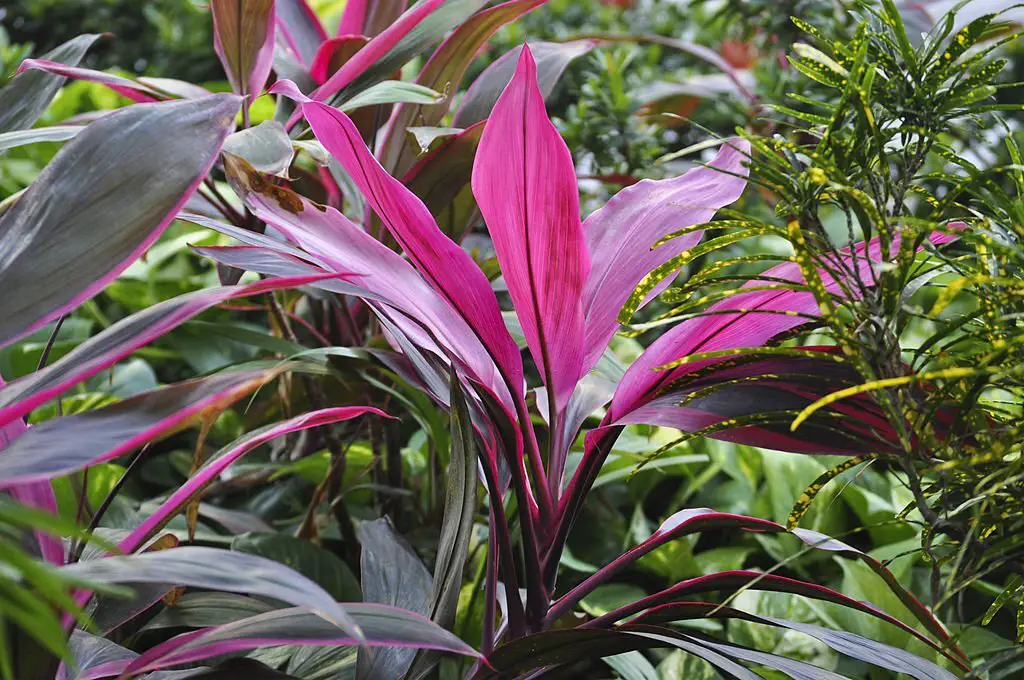Last Updated on October 8, 2022 by Real Men Sow
Cordyline terminalis, also known as the “ti plant”, is a tropical beauty with large leaves that range in color from deep reds to variegated greens to purples. The plant is native to tropical climates of Hawaii, New Guinea, and other Pacific islands. The ti plant (also known as Cordyline Fruticosa) can be grown indoors in cooler climates. It can then grow to a height of up to 10 feet.
Outdoor Care
Soil and Light
The Cordyline terminalis should have a well-drained soil, partial shade or full sun. Bright sunlight brings out the best colors in the leaves.
Watering
Cordyline Terminalis will thrive in high rainfall areas, so give it approximately 1 inch of water each week. The ti plant can withstand moderate drought, but don’t let the soil dry out. Too much soil could cause leaf tips to turn brown.
To keep the leaves dry, water the plant with a soaker or hose. Use a sprinkler to water the plant early in the morning to let it dry before the evening. Plants that have damp foliage or are exposed to cooler temperatures at night are more susceptible to fungal infections.
Feeding
Use a balanced granular fertilizer in a ratio of 10-10-10 or 16-16-16 to fertilize the plant once a month. Two ounces of fertilizer should be applied to each plant. Apply fertilizer to moist soil and water immediately following fertilization. Keep fertilizer away from the leaves. Rinse off fertilizer immediately if it lands on leaves.
Pruning/Cutting
To keep your ti plants looking neat, remove any old leaves. This will help you to create a distinct trunk. When the leaves turn brown, remove them with garden shears and/or scissors. Do not pull the leaves.
Indoor Care
Potting Soil
It should be planted in a potting mix that retains moisture and is not too soggy. You can use a high-quality, commercially available potting mix or make your own. This mixture will consist of 1 part peat moss, 1 part perlite and 1 part sand. Make sure to use a pot that is sturdy and has a drainage hole at the bottom.
Feeding
Give the plant weak solutions of a water-soluble fertilizer that is suitable for indoor plants. Mix the solution in a 1 teaspoon per gallon of water. Then, apply the fertilizer every other month during spring or summer. You can also use a time-release fertilizer according to the instructions on the label.
Watering
Water the plant thoroughly until the water runs through the drainage hole. However, only water the plant when 1/2 inch of the soil feels dry. Let the pot drain and then pour any water from the drainage saucer out. You can also place the pot in water, and let the soil absorb the water until it feels damp. You should never let the pot’s bottom touch water.
Humidity
A bed of gravel or pebbles can help raise humidity around the plant. Place a layer of pebbles on a tray or in a shallow bowl. Then, place the pot on top of the pebbles. You can add a little water to the pebbles, but keep them damp. Do not add water to the pot so that it is submerged in water.
Reminder:
Fluoride in your water may cause brown tips on your ti plants. You can fix the problem by watering the plant with bottled drinking water.

